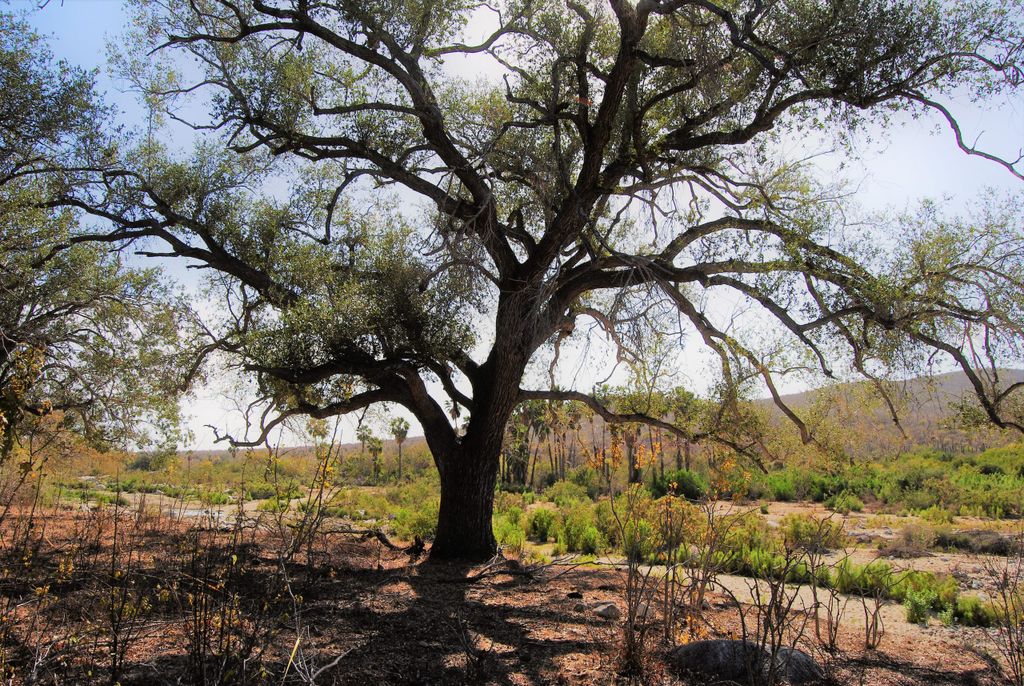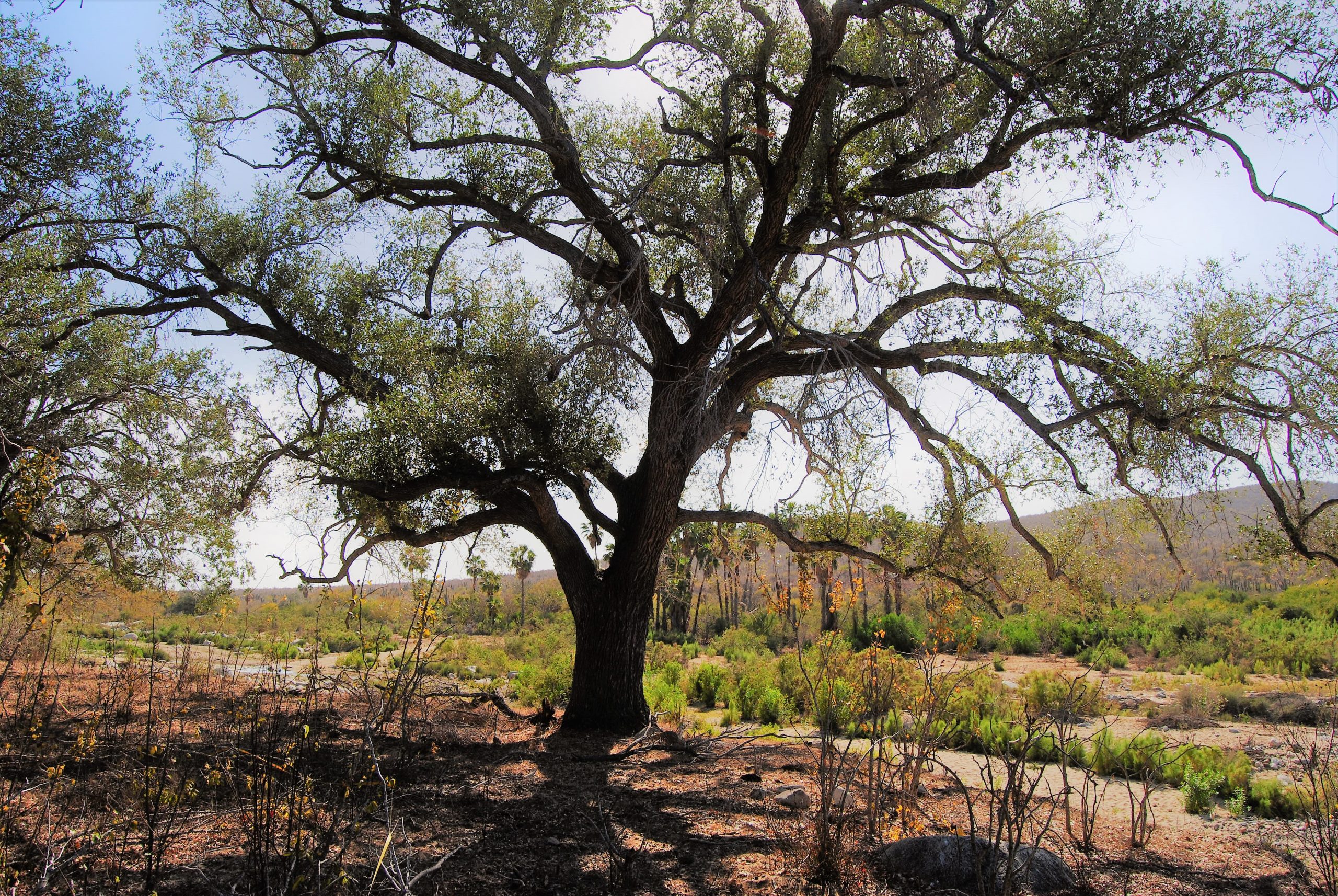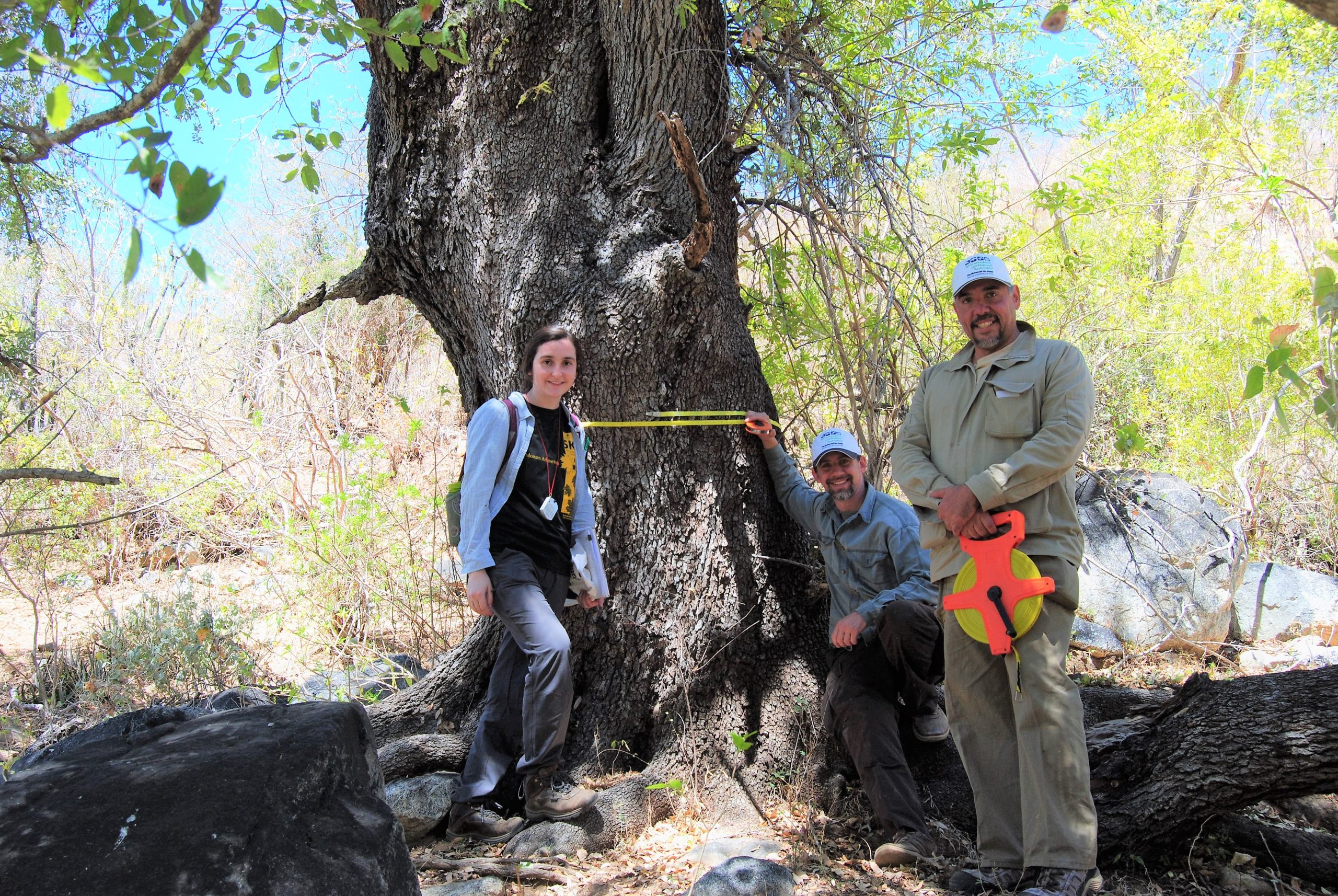Integrated Conservation of the Arroyo Oak Mexico

-
Status of project
Completed -
Region
Latin America and the Caribbean -
Country
Mexico -
Programme
Global Trees Campaign -
Workstream
Saving Plants -
Topic
Tree Conservation
Project completed
Conservation problem
Quercus brandegeei is confined to a very small range in Baja Sur. It is threatened by lack of wild regeneration with no new seedlings estimated to have established in at least 100 years, the reason why a mystery.
Project goal
Work with scientists, land managers and local stakeholders to develop and execute a scientifically-informed, conservation and management plan to save the endangered oak Quercus brandegeei from the brink of extinction.

Which species and why?
Quercus brandegeei, the arroyo oak, is an Endangered, narrowly endemic oak tree in the Cabo Region, Mexico. Historically, ancestors were fairly widespread, however, it is now confined to a very small range. It grows in ephemeral stream beds that fill up after hurricanes and has very distinct, elongate acorns.
One-third of its 3,000 km2 range is within a protected area, Sierra La Laguna Biosphere Reserve. The region is a biodiversity hotspot with high levels of endemism and great beauty.
In this case, however, simply protecting the species’ range does not address the threats causing decline. This is because no natural regeneration is being seen and ecologists estimate that no new trees have grown in around 100 years. Factors that could be at play include drought caused by long-term climate change and seed predation by local cattle ranching.
What are we doing?
BGCI, in conjunction with the Morton Arboretum, La Universidad Nacional Autonomo de Mexico, the University of Minnesota and Centro de Investigaciones Biologicas del Noroeste, is working on a project to research what is preventing regeneration of Quercus brandegeei in order to inform future conservation efforts.
Since 2017, we have collected genetic, phenological, and ecological data on Q. brandegeei to determine specific threats and identify conservation and management actions needed to save it from extinction.
The project aims to collect acorns to increase ex situ representation in Mexican gardens and for greenhouse propagation experiments. The data collected in these studies will be used to inform future reintroduction efforts of Quercus brandegeei in Baja California.
Expected outcomes of this project include:
- seedlings established in the wild for the first time in a century
- acquisition of knowledge about factor(s) limiting regeneration of Q. brandegeei in the wild
- estimates of future range under climate change and identification of sites suitable for assisted migration
- scientifically robust germination and propagation protocols
- reintroduction and population reinforcement guidelines created and shared with stakeholders engaged in in situ conservation and management of Q. brandegeei
- increased local capacity for conservation in the form of training and resources
- increased representation of Q. brandegeei in botanic garden ex situ conservation collections
- peer-reviewed journal article(s), policy briefs, and educational materials
Key achievements
In the first year of this project, a comprehensive demographic study of this species to record population sizes, age dynamics and various environmental factors that may be impacting this species was carried out.
We have also established fenced exclosures to quantify the effect of grazing and trampling by free-roaming livestock on seedling survival and growth. Overall, our data suggest that climate change, habitat degradation, and overgrazing by cattle are likely affecting populations and preventing regeneration.
Based on this information, we have developed a scientifically-informed integrated conservation and management plan for this species that takes into consideration the socio-economic needs of local communities. We are currently working with Mexican scientists, land-managers, ranchers, and international experts to implement this plan and save this culturally and ecologically important oak species.

More information
- Planted Podcast-Episode 1, Season 2: Collaboration. Tree Conservation Ecologist Dr. Silvia Alvare-Clare talks about collaboration, including examples from the Q. brandegeei project (2019)
- Party at the Oak by the River Tree-mendous Tree Story by S. Alvarez-Clare (2019)
- Canopy Career Chronicles at The Morton Arboretum: Monica the Conservation Leader: This story uses our work on Q. brandegeei to describe what a career as a conservation scientist could look like.
The project has also been supported by the Mohamed bin Zayed Species Conservation Fund.